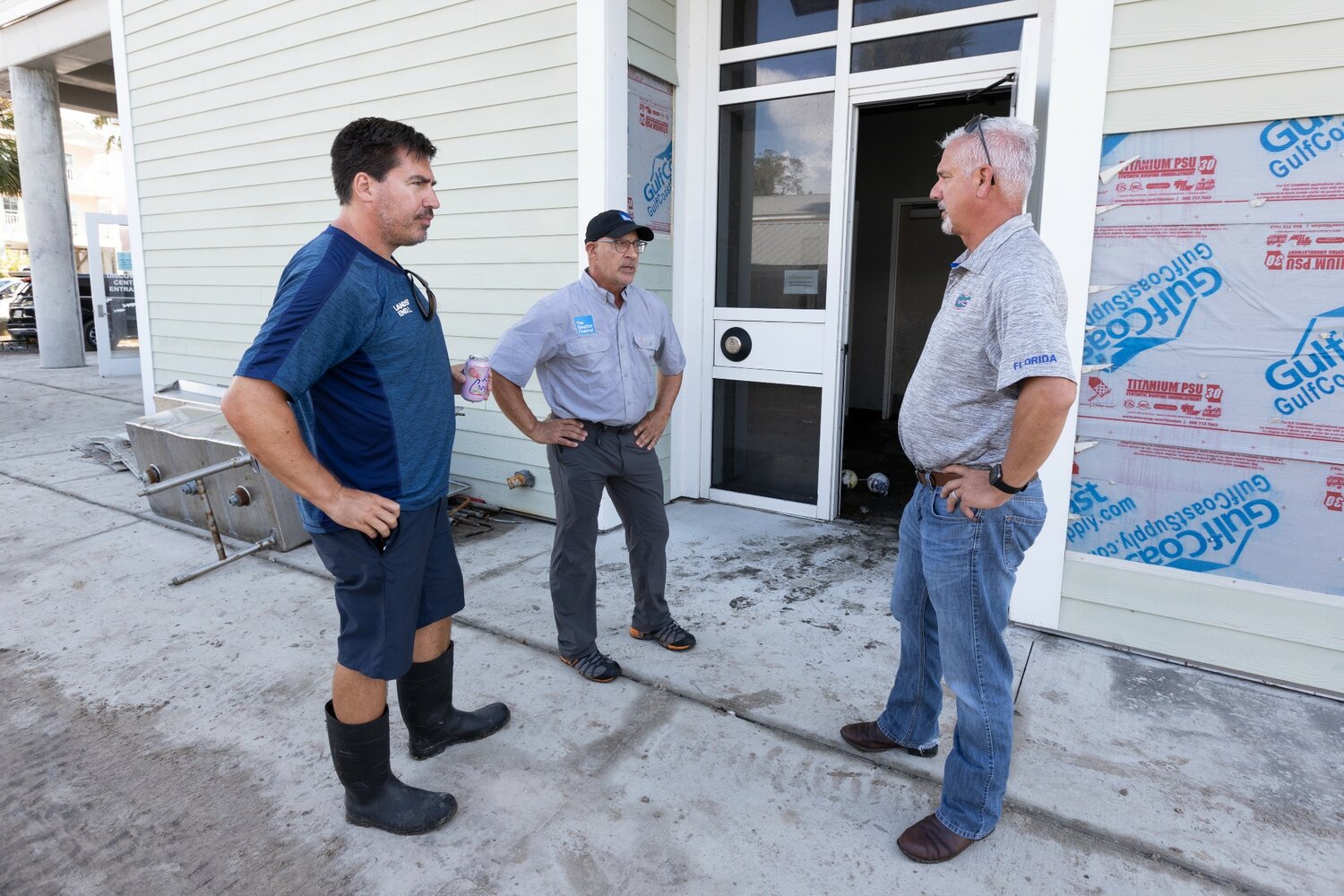When Hurricane Idalia barreled through the Big Bend region of Florida...
Join our family of readers for as little as $5 per month and support local, unbiased journalism.
Already have an account? Log in to continue. Otherwise, follow the link below to join.
Please log in to continue |

When Hurricane Idalia barreled through the Big Bend region of Florida, Mike Allen was stuck in Gainesville, watching a beloved facility get slammed by storm surge while The Weather Channel’s Jim Cantore reported from the facility’s second-story patio.
Once the rain stopped and the wind subsided after the storm rushed through on Aug. 30, University of Florida Institute of Food and Agricultural Sciences (UF/IFAS) employees took stock of what the Category 3 hurricane had done: A lab with smashed equipment. Trees snapped like toothpicks. Greenhouses bent and their coverings shredded. No UF/IFAS employees were hurt in the storm.
And nearly as quickly – as soon as the storm surge retreated and the wind stopped – UF/IFAS volunteers loaded into cars and created caravans on the way to the facilities hit worst by the storm. Volunteers mopped muck at the Nature Coast Biological Station (NCBS) in Cedar Key, and chainsawed fallen trees at the Northwest Florida Research and Education Center in Live Oak and at Florida 4-H’s Camp Cherry Lake in Madison.
As soon as the coast was clear, prepared trucks loaded with generators, fresh water and other emergency supplies hit the road to the areas hurt by the storm. The trucks had been ready and waiting for days as part of UF/IFAS’ emergency response. With locations all across Florida, UF/IFAS has a strong emergency preparation, response and recovery plan which includes heavy equipment, trained personnel and a lot of action after the storm has passed.
Allen, the director of the UF/IFAS’ NCBS in Cedar Key, Florida, said he was struck by the outpouring of support from fellow UF/IFAS employees. The facility had so many volunteers that some were allocated to the city of Cedar Key to volunteer because all of NCBS’ needs were met.
“The IFAS community really came through for us in the aftermath of this storm,” Allen said. “We had volunteers that included undergraduate and graduate students, faculty, as well as equipment and personnel from IFAS facilities and the Plant Science Research and Education Unit in Citra. Our whole team couldn’t be more appreciative of the response and support our station received.”
At the North Florida Research and Education Center – Suwannee Valley (NFREC-SV) in Live Oak, Florida, a steady crew of volunteers worked diligently throughout the week after the storm cleared, removing fallen trees and assessing damaged buildings.
“They could not wait to come help us,” said Bob Hochmuth, assistant center director for the NFREC-SV. “We appreciated their spirit and how they rallied and took so much of their time to help us get back on our feet.”
“The first two days were focused on getting electric back up and trees removed. You could not get from the farm to the main office because of the trees that were down,” Hochmuth said. “The facility was back up and running once we got power.”
The day after the Labor Day holiday, NFREC-SV was open and working to serve the stakeholders in their area who were also affected by Hurricane Idalia.
He said it was heartwarming to see the UF/IFAS community come together, and he could barely keep up with all the calls to come help his facility.
“I think we could have had 100 people at the gate the morning after Idalia if we’d needed them,” he said.
The Weather Channel also appreciated UF/IFAS’ support by letting renown reporter Jim Cantore and his team safely broadcast live during the storm from the second floor of NCBS.
“I know that The Weather Channel was very appreciative because it was a perfect venue to document this storm, and that has a lot of educational value, which is a lot of what IFAS does,” Allen said.
Cantore said he was grateful for the use of the facility, which was built to withstand Category 4 hurricanes.
“I cannot thank Mike Allen and the people at the UF/IFAS Nature Coast Biological Station enough for allowing our The Weather Channel team to use this amazing facility to highlight the dangers of storm surge,” Cantore said. “Our mission was a complete success thanks to your efforts.”